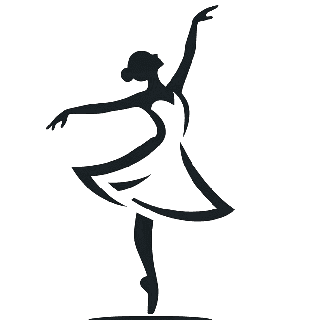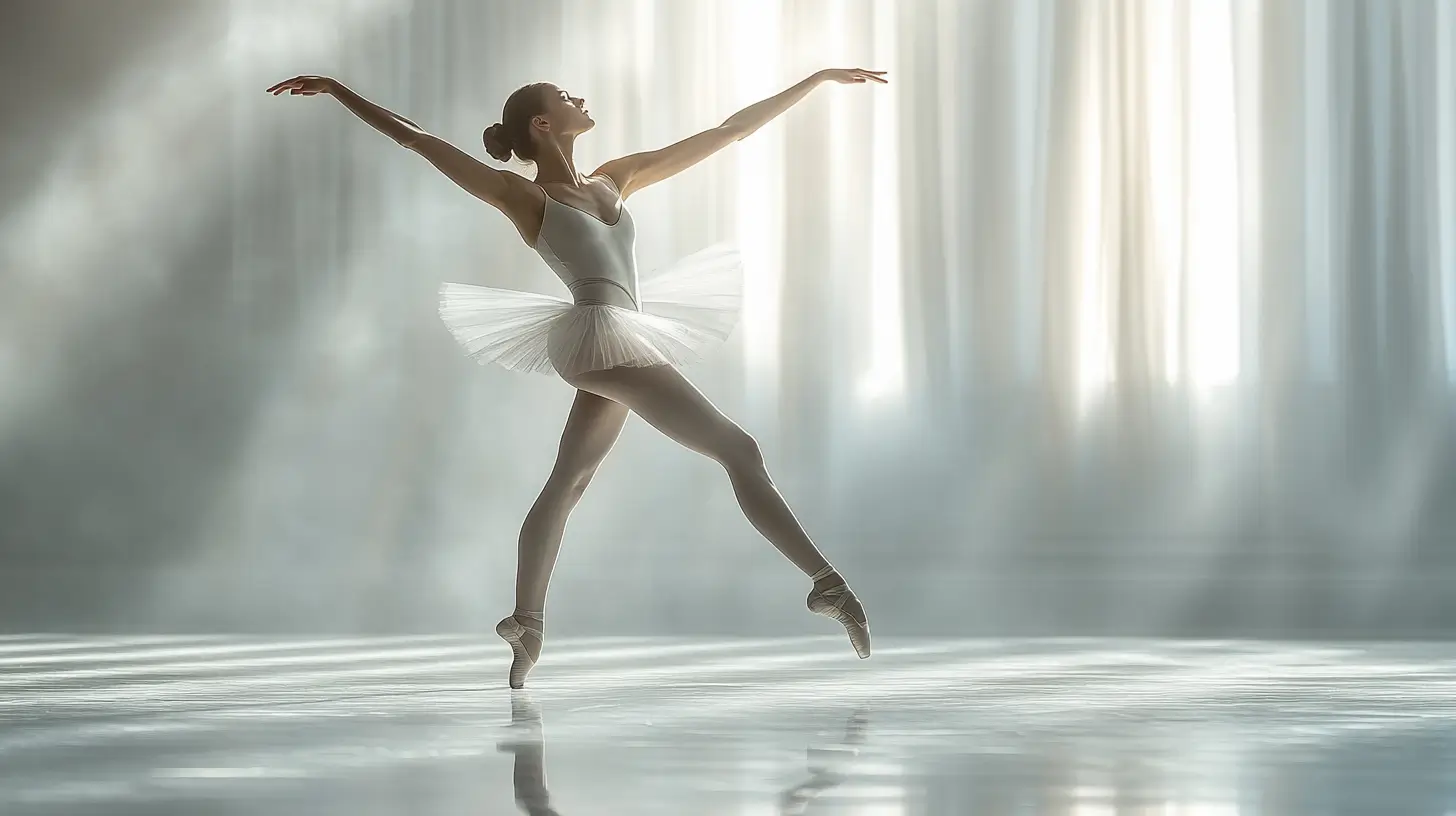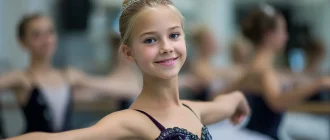Ballet research covers essential topics like gender equity, injury prevention, mental health, company financial health, and tech advancements. This article highlights these areas, emphasizing how dance school environments impact mental health and identity to improve practice and well-being in the ballet community.
Graceful Insights
- Gender disparity persists in ballet leadership. Only 30% of artistic directors in the largest U.S. ballet companies are women, necessitating initiatives to promote equity.
- Injury prevention programs are essential for the health and longevity of ballet dancers. Like professional athletes, ballet dancers face intense physical and mental demands. These programs demonstrate significant effectiveness through evidence-based practices, such as randomized controlled trials.
- The financial health of ballet companies is vital for sustainability, with endowments providing stability, yet many companies face revenue challenges that necessitate diversified income sources.
Art de Podcast
| Research Focus | Key Findings | Implications for Practice |
|---|---|---|
| Injury Causes and Prevention | Fatigue and pressure are major perceived causes of injuries among ballet dancers. Support from instructors in injury prevention is often moderate to low. pubmed.ncbi.nlm.nih.gov | Emphasizes the need for increased awareness and proactive injury prevention strategies among dancers and instructors. |
| Neuromuscular Conditioning | Dance-specific neuromuscular conditioning can improve motor control, stability, and balance, potentially reducing injury rates. ijspt.scholasticahq.com | Encourages the integration of targeted neuromuscular training into regular practice to enhance performance and minimize injuries. |
| Mental Health | Ballet culture and identity significantly impact dancers’ mental health, with common experiences including compartmentalization and a strong association between self-worth and performance. tpcjournal.nbcc.org | Highlights the importance of mental health support and counseling tailored to the unique cultural context of ballet. |
| Health Problem Prevalence | Professional ballet dancers report an average of 5.6 health problems per season, 73.1% being injuries. sportsmedicine-open.springeropen.com | Indicates a high prevalence of health issues, underscoring the need for comprehensive health monitoring and preventive measures. |
| Footwear Innovations | New high-tech ballet shoes offer greater comfort and longevity, though some traditionalists resist these innovations. wsj.com | Suggests a potential shift in footwear preferences, balancing tradition with advancements that enhance dancer well-being. |
Ballet research is a vital aspect of the dance community, focusing on the physical, psychological, and social dimensions of ballet dancing. As the demand for professional ballet dancers continues to rise, research has become essential in enhancing performance, preventing injuries, and promoting overall well-being. This growing body of research encompasses various topics, from biomechanics and injury prevention to mental health and gender equity. By better understanding the complexities of ballet, researchers can develop evidence-based strategies that support the health and success of dancers at all levels.
Background and Context
Ballet is a highly demanding activity that requires a unique combination of physical strength, flexibility, and artistic expression. Professional ballet dancers face numerous challenges, including intense training schedules, high-performance expectations, and the constant risk of injury. Research has shown that ballet dancers are particularly susceptible to musculoskeletal injuries, especially in the lower extremities and lower back. These injuries can be debilitating and often result from repetitive strain and overuse.
Moreover, the pressure to maintain a lean and aesthetically pleasing physique can lead to negative body image and disordered eating disorders and behaviors among dancers. The pursuit of an idealized body shape is deeply ingrained in the culture of ballet, contributing to mental health challenges that can affect dancers’ overall well-being. Understanding these physical and psychological demands is crucial for developing effective injury prevention strategies and fostering a supportive environment for dancers.
Exploring Gender Equity in Ballet Leadership
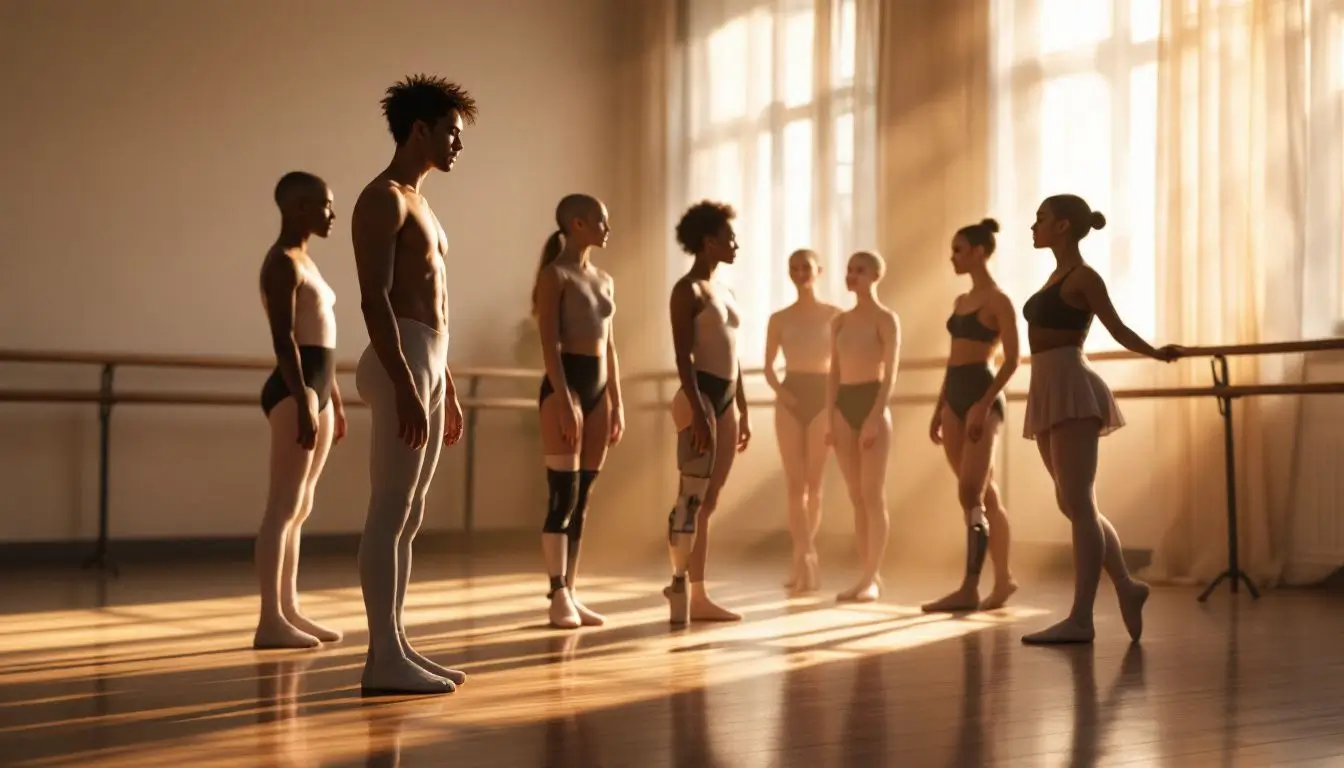
Gender equity in ballet leadership continues to be a contentious issue. Although the workforce is predominantly female, leadership roles, particularly artistic directors, are mainly held by men. In the largest 50 U.S. ballet companies, only about 30% of artistic directors are women. This gender disparity is also seen globally, with men being appointed as creative directors nearly twice as often as women.
The historical context of ballet further complicates this issue. While women constitute 76.6% of the ballet workforce, they often find themselves in lower-status roles with fewer high-profile commissions. Addressing this disparity requires a concerted effort from the dance community to foster initiatives that promote gender equity in leadership roles, ensuring that the art form reflects the diversity and talent within its ranks.
Artistic Director Roles
Artistic directors play a key role in shaping the vision and direction of ballet companies. Yet, female artistic directors remain significantly underrepresented, especially in the largest ballet companies. In the top 50 ballet companies, only 21.6% of creative directors are women, compared to 51.9% in the next 50. This disparity highlights the ongoing male dominance in high-ranking ballet positions.
The salary gap between male and female artistic directors is also glaring. In the largest 100 ballet companies, women in these roles earn an average of $104,656, while men earn about $173,541. This pay disparity underscores the broader issue of gender inequity in the arts, where women continue to face systemic barriers to leadership and fair compensation despite their contributions.
Executive Compensation
Executive compensation in ballet also reflects gender disparities. Men in leadership roles generally receive higher pay than their female counterparts. Female executive directors at the largest 100 ballet companies earn 80 cents for every dollar paid to their male colleagues.
Transparent pay practices are essential for reducing gender pay disparities and promoting equity within the ballet community.
Global Leadership Trends
Globally, women are underrepresented in ballet leadership positions, mirroring broader trends in the arts. Men are appointed to artistic director roles at nearly twice the rate of women, reflecting significant challenges in achieving gender equity.
These trends show that more work is needed to ensure ballet leadership reflects the talent and diversity within the dance community.
Injury Prevention Programs for Professional Ballet Dancers
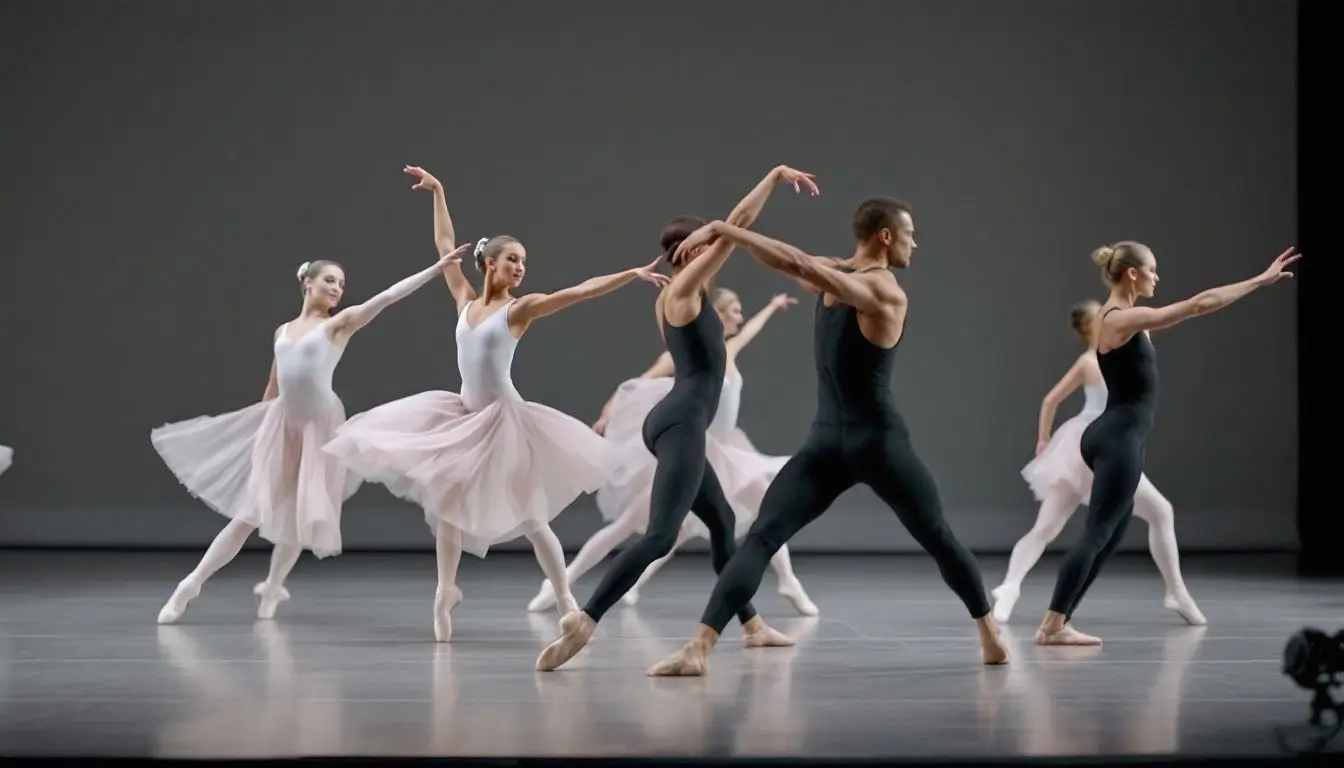
Injury prevention programs tailored for ballet dancers are essential for reducing injuries and promoting longevity. These programs aim to minimize risks from intense training and performance schedules. Structured injury prevention programs have shown significant promise in enhancing the well-being and performance of dancers within a professional ballet company.
A key strategy in these programs is incorporating targeted exercises to strengthen the musculoskeletal system. These exercises help reduce injury rates and improve overall dancer health, enabling longer and more fulfilling careers.
Focusing on injury prevention is about more than immediate concerns; it fosters a culture of proactive health management within the ballet community.
Randomized Controlled Trials
Randomized controlled trials (RCTs) are essential in evaluating the effectiveness of injury prevention programs in ballet. One notable trial included 39 dancers from a single ballet company, divided into intervention and control groups to rigorously assess the program’s impact. The trial significantly reduced injury rates, with an 82% decrease among dancers who followed the structured exercise program. These findings underscore the importance of scientifically backed injury prevention initiatives.
RCTs offer a robust framework for establishing the benefits of injury prevention programs, ensuring the strategies are effective and evidence-based. The positive outcomes from such trials underscore the necessity of incorporating structured, well-researched injury prevention programs in the training regimen of professional ballet dancers, as highlighted by the research team.
Program Implementation
Implementing injury prevention programs involves a structured approach to ensure adherence and effectiveness. For instance, an exercise program was designed to be performed three times a week for a year. Participants received instructions through written materials and video demonstrations, aiding consistent program following.
Institutions like the Royal Ballet School have promoted dancer health through initiatives like the Healthy Dancer Programme. These programs are vital for maintaining dancers’ health and performance, reducing injury rates, and promoting long-term well-being.
Results and Impact
The impact of injury prevention programs is profound. Participants’ duration before experiencing subsequent injuries was significantly longer, with a 45% improvement over those who did not participate. This indicates structured programs reduce immediate injury risks and contribute to sustained dancer health.
Implementing injury prevention programs significantly reduced the total number of injuries recorded during the study period. These programs are essential for enhancing the well-being and longevity of ballet dancers, helping them maintain peak performance throughout their careers.
Financial Health of Ballet Companies
The financial health of ballet companies is a key indicator of their economic stability and growth potential. Endowments support ongoing operations and provide a stable funding source. Effective endowment management significantly impacts a company’s ability to weather economic fluctuations and deliver high-quality performance.
Ballet companies have recently faced financial stability challenges due to fluctuating expenditures and revenue streams. For instance, the combined spending of the largest 150 U.S. ballet companies in FY 2021 was approximately $441.9 million, a decrease of over 31% from FY 2020. However, total aggregate expenditures for FY 2022 rebounded to roughly $719 million.
These financial metrics offer valuable insights into ballet companies’ economic stability and growth potential.
Endowments and Assets
Endowments and assets are crucial for the financial health of ballet companies. Among the largest 150 U.S. ballet companies, 47 reported endowments, primarily from the top 50, indicating a concentration of economic resources. In FY23, the median endowment size was approximately $3.75 million, with significant variation in reported balances.
The largest ballet companies hold over 70% of their endowments in permanent funds, indicating a strategy for long-term financial security. These endowments offer a stable economic foundation, enabling companies to plan and execute their artistic visions without relying heavily on fluctuating revenue streams.
Revenue and Expenditures
Ballet organizations often generate revenue from ticket sales and donations, leading to uneven revenue distribution. In FY 2021, the largest 50 ballet companies accounted for nearly 89% of the total expenditures among the largest 150 companies. This reliance on uneven revenue and disproportionate spending can affect the financial stability of the ballet sector.
Many large ballet organizations depend heavily on these revenue streams, highlighting the need for diversified income sources to ensure long-term sustainability. Balballet companies can enhance their financial resilience and continue contributing to the cultural landscape by exploring new revenue avenues and optimizing expenditure patterns.
Economic Contributions
Ballet companies contribute significantly to local economies through job creation, tourism, and cultural events. In fiscal year 2022, the largest 150 ballet companies collectively spent over $719 million. This spending supports the ballet community and has a ripple effect on associated industries, such as other forms of hospitality and retail.
In FY 2022, revenues for the largest 50 ballet companies rose to around $739 million, demonstrating growth in the sector. Ballet’s financial impact extends beyond performances, influencing local economies and contributing to broader economic stability.
Representation of Female Choreographers
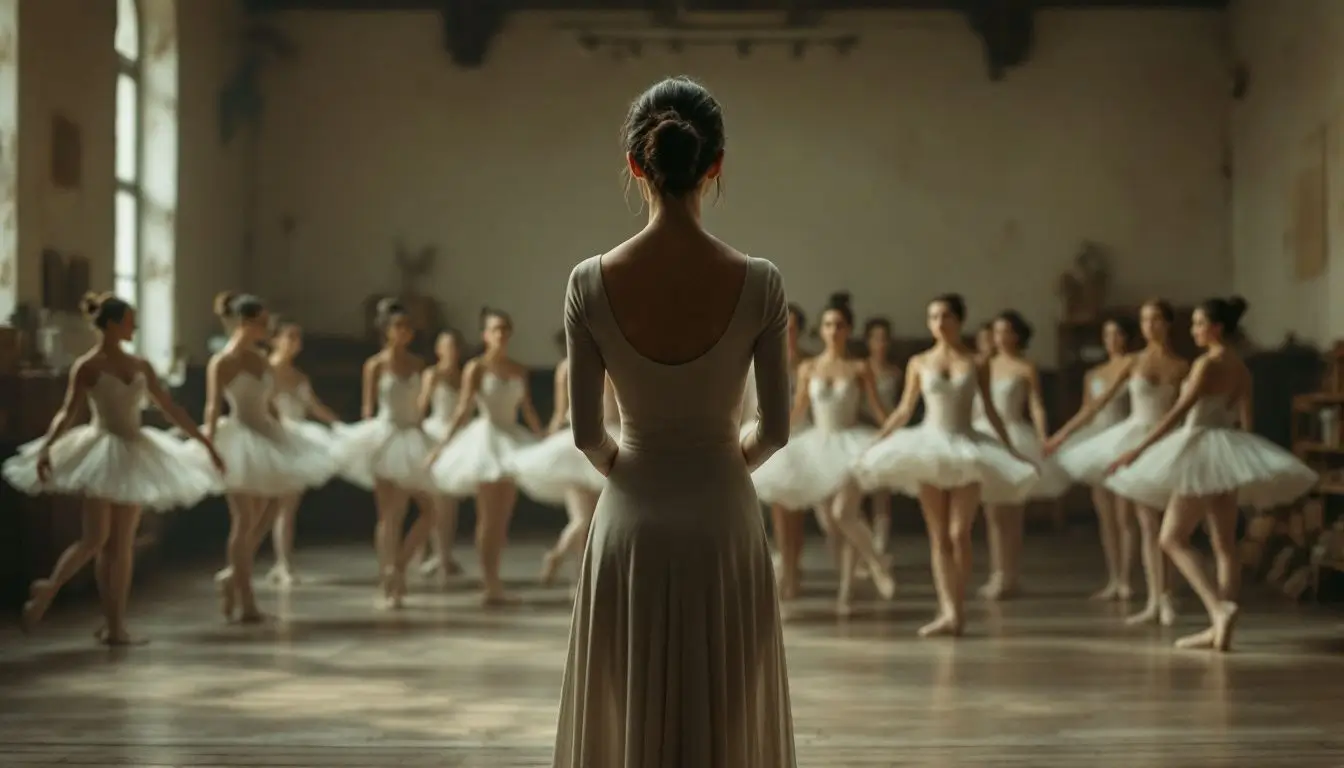
The representation of female choreographers in ballet remains a critical issue, reflecting broader gender disparities within the art form. Although more women are in leadership roles as executive directors, their presence as choreographers lags. In major ballet companies, 58.7% of executive directors are women, contrasting with the lower representation among artistic directors.
This disparity is evident in seasonal programming data, where women choreographed only 29% of works performed by the largest ballet companies in the 2021-2022 season. The proportion declined further to 27% in the 2022-2023 season.
These figures highlight the need for greater visibility and acknowledgment of female choreographers in ballet, ensuring their contributions are recognized and celebrated.
Seasonal Programming Data
Seasonal programming data reveals the underrepresentation of female choreographers in ballet. During the 2021-2022 season, women choreographed only 29% of the works performed by the largest ballet companies. This percentage has generally remained below 40%. The decline to 27% in the 2022-2023 season highlights a persistent gender representation gap.
The data emphasizes the need for ballet companies to prioritize gender equity in programming decisions. By actively promoting works by female choreographers, dance companies can ensure a more balanced and diverse repertoire, reflecting the rich tapestry of talent within the dance community.
Award Competitions
Award competitions significantly impact the careers of choreographers, yet gender disparities persist. Between 2018 and 2023, only 32% of winners in choreographic competitions were women, despite female recipients in fellowships reaching 59%.
The present study’s findings suggest a disparity in recognition between competitions and fellowships, highlighting the need to examine gender bias within the ballet community further.
Historical Contributions
The historical contributions of female choreographers to ballet are significant but often overlooked. Pioneers like Marie Sallé and Agnes de Mille introduced narrative elements that transformed the art form, challenging traditional male-dominated choreographic traditions. Their work paved the way for future generations of female choreographers, underscoring the need for continued recognition and celebration of their contributions.
Despite these historical contributions, major ballet companies like The Royal Ballet and American Ballet Theatre have featured very few works by female choreographers in recent seasons. This ongoing lack of representation underscores the importance of increasing the visibility and acknowledgment of female choreographers, ensuring their voices and creative visions are integral to the evolution of ballet.
Mental Health and Body Image in Ballet

The mental health and body image of ballet dancers are critical aspects of their overall well-being. The physical and emotional demands of ballet, particularly the intense focus on dancers’ physical form, can lead to significant mental health challenges, including disordered eating and negative body image. Effective ballet training programs emphasize technique, mental resilience, and adaptability in students.
Support systems within the ballet community are essential for addressing these challenges. Providing comprehensive mental health support promotes a healthier and more sustainable environment for dancers, ensuring their well-being is prioritized alongside their artistic development.
Disordered Eating and Negative Body Image
Disordered eating is a prevalent issue among ballet dancers, often linked to the physical demands and aesthetic ideals of the art form. Training experiences in ballet can vary for male and female students, reflecting broader societal expectations and biases. The pursuit of an idealized physique exacerbates body image issues, leading to mental health challenges that can affect dancers’ overall well-being.
Addressing these issues requires comprehensive support systems within the ballet community to promote mental well-being. By fostering a supportive and understanding environment, ballet schools and companies can help dancers navigate the pressures of the profession while maintaining a healthy relationship with their bodies.
Support Systems
Support systems are crucial for ballet dancers, particularly in addressing the unique mental health challenges they face. Dancers are at a heightened risk for mental health issues due to the physically demanding nature of their profession. Effective counseling for ballet dancers requires understanding the unique pressures and culture they navigate.
Counselors should be aware of ballet culture to better assist dancers in navigating their mental health needs. Dancers often look to their coaches and peers for validation, which can significantly influence their body image and mental health. The ballet community can help dancers maintain their mental well-being by providing targeted support and creating a positive environment.
Case Studies
Testimonials from ballet dancers reveal common struggles with mental health, emphasizing the need for better support and awareness within the ballet community. Many dancers express a strong connection between their identity as the human body and their profession, which can complicate their mental health experiences. The pressure to perform and maintain an idealized physique often leads to compartmentalizing emotions, a coping mechanism that can hinder mental health.
Case studies highlight the importance of comprehensive mental health support and the need for the ballet community to prioritize the well-being of its dancers. By understanding and addressing these challenges, the ballet community can create a healthier and more supportive environment for its members.
The Role of Ballet Schools in Shaping Future Dancers
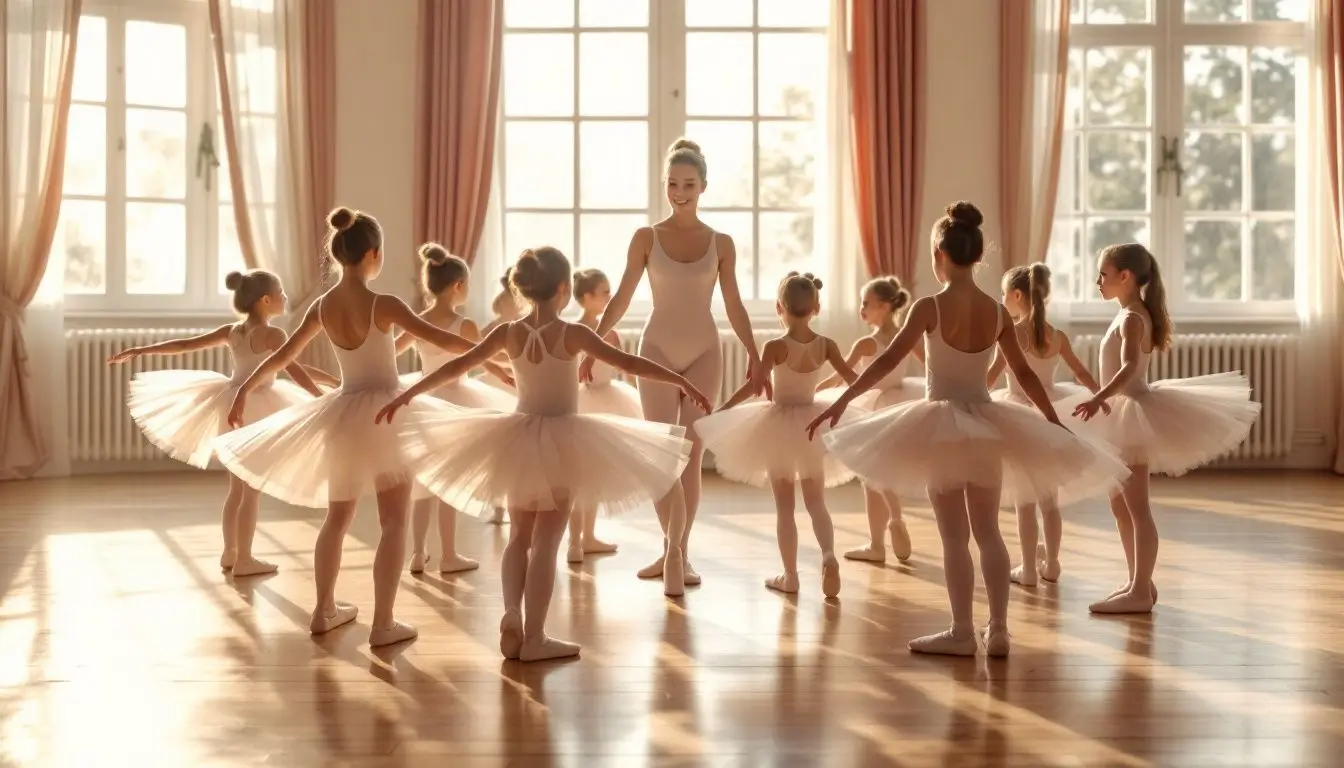
The best ballet schools play a critical role in shaping dancers’ futures by providing foundational training and support. These schools significantly contribute to a dancer’s physical and artistic development, offering structured training and exposure to professional environments. By nurturing talent and providing mentorship from ballet teachers, ballet schools are essential in preparing dancers for professional careers in ballet.
Ballet schools evolve to meet contemporary demands, integrating technology and diverse curricula to enhance the learning experience. This evolution is crucial for nurturing aspiring dancers and ensuring they are well-equipped to meet the challenges of the professional ballet world. For example, a step-down exercise in which practitioners must keep one leg extended over the edge of a step while bending the standing leg is often incorporated to emphasize proper form and control.
Training Programs
Effective ballet training programs incorporate a blend of technique, artistry, and performance opportunities. These programs often include structured exercise routines integrated into regular training schedules to prevent injuries and promote dancer health. By combining technique, artistry, and performance skills, training programs enable students to meet the demands of professional classical ballet.
Injury prevention programs are also vital to ballet training, specifically focusing on reducing the risk of injuries and maintaining dancer health. These programs create a supportive environment that prioritizes the well-being of students, preparing them for successful careers in ballet.
Gender Differences in Training
Gender differences in ballet training reflect broader societal expectations and biases. Male dancers often receive training focused on strength and athleticism, while female dancers may be trained more on flexibility and grace. This differentiation can impact dancers’ psychological well-being, with pressure on females to conform to traditional aesthetics.
Studies show that female dancers are often expected to perform with a higher degree of femininity, influencing the training methods used in ballet schools. Addressing these gender stereotypes is essential for creating a more inclusive and supportive training environment for all dancers.
Alumni Success Stories
Many ballet school alums achieve notable careers, with some securing positions in prestigious companies like the Paris Opera Ballet and the Joffrey Ballet. These success stories highlight the importance of quality training and mentorship from ballet masters in shaping the future of pre-professional and professional ballet dancers, inspiring current students to pursue their passions and excel in their careers.
Technological Advancements in Dance Science
The integration of technology in dance science is revolutionizing the study and practice of ballet. Advancements in technology are enhancing the understanding of movement biomechanics, providing valuable insights that improve dancer performance and health. Virtual platforms have also transformed ballet training, allowing schools to offer remote classes and international workshops, thereby increasing accessibility.
These technological innovations enhance the learning experience most dancers have and ensure that ballet remains relevant in a rapidly evolving world. By embracing technology, the ballet community can continue to push the art form’s boundaries and provide dancers with the tools they need to succeed.
Motion Capture and Analysis
Motion capture technology allows for precise measurement and analysis of a dancer’s movements, helping to identify areas for improvement in technique. Systems like Microsoft Kinect enable detailed data analysis, converting movements into digital scores for choreography and technique enhancement.
Motion capture systems provide targeted feedback, allowing dancers to refine their movements and perform better. By digitizing dancer movements, these systems generate accessible data for ongoing analysis and improvement, contributing to advancing dance science.
Wearable Technology
Wearable devices equipped with sensors track dancers’ movements and provide real-time feedback on their performance and health. This technology is becoming increasingly important in ballet for monitoring dancer health and performance, offering immediate insights that assist in injury prevention and performance enhancement.
Virtual Reality Training
Virtual reality (VR) is increasingly integrated into dance training to create immersive educational experiences. The WAVE VR technique, for instance, enhances dance instruction by allowing learners to visualize upcoming movements in a wave-like sequence, improving real-time learning.
VR in ballet training can improve movement understanding, increase engagement, and potentially increase retention of learned skills. Integrating VR into dance education represents a promising innovation that could transform how dancers learn and practice their art.
Discussion and Implications
Recent studies have underscored the importance of injury prevention programs (IPPs) in reducing the risk of injury among professional ballet dancers. For instance, a randomized controlled trial conducted by a dedicated research team found that an IPP significantly lowered the injury rate in professional ballet dancers. The study revealed an impressive 82% decrease in injury rates for the intervention group and an extended period from previous injury to subsequent injury. These findings highlight the critical role of structured, evidence-based injury prevention strategies in safeguarding dancers’ health.
The implications of these findings are far-reaching for ballet companies, dance schools, and individual dancers. By integrating IPPs into regular training schedules, these institutions can significantly enhance dancer health and performance. The research also emphasizes the need for a holistic approach to dancer well-being, addressing both physical and psychological aspects to ensure a sustainable and fulfilling career in ballet.
Practical Applications and Recommendations
Based on the current research, several practical applications and recommendations can be made for ballet dancers, teachers, and companies. Firstly, incorporating injury prevention programs into training schedules can significantly reduce the risk of injury. These programs should include targeted exercises to strengthen the musculoskeletal system and improve dancer health.
Secondly, promoting a positive body image and healthy eating habits is essential in mitigating the risk of disordered eating behaviors. Ballet schools and companies should foster an environment that values health and well-being over unrealistic aesthetic standards.
Thirdly, providing access to qualified healthcare professionals, including physical therapists and sports psychologists, can support dancers’ overall well-being. These professionals can offer specialized care and guidance, helping dancers navigate their profession’s physical and mental demands.
Finally, ballet companies and dance schools can prioritize dancer health and safety by implementing evidence-based injury prevention strategies and promoting a culture of wellness. By embracing these recommendations, the ballet community can ensure that dancers are well-equipped to meet the challenges of their art form while maintaining their health and well-being.
Resume
Advancements in ballet research and practice pave the way for the art form’s more inclusive, healthy, and innovative future. From addressing gender disparities in leadership to implementing effective injury prevention programs, the ballet community is taking significant steps to ensure the well-being and success of its dancers. Financial health, representation of female choreographers, mental health, ballet schools, and technology play crucial roles in this ongoing evolution.
As we continue exploring new frontiers in ballet, we must remain committed to fostering a supportive and equitable environment for all dancers. By embracing research, technology, and inclusive practices, the ballet community can ensure this timeless art form thrives for generations. Let us celebrate ballet’s beauty and resilience while striving for progress and innovation in every pirouette and plié.
FAQ
What is the role of dance notation systems like Labanotation and Benesh in ballet research?
Dance notation systems provide a standardized language to record choreography, enabling researchers to analyze, reconstruct, and compare ballets across time and space.
How can digital archives and online databases support historical ballet research?
Digital archives offer high-resolution scans of rare programs, photographs, and manuscripts, allowing scholars to access and cross-reference primary sources without geographic constraints.
Why are oral histories and interviews valuable in documenting ballet heritage?
Oral histories capture personal memories of dancers, choreographers, and teachers, preserving nuances of style, rehearsal processes, and company culture that rarely appear in written records.
What methodologies can be employed to analyze filmed ballet performances?
Researchers combine video annotation tools with qualitative analysis frameworks to time-stamp sequences, describe movement qualities, and correlate stylistic choices with historical or pedagogical contexts.
In what ways can motion capture and biomechanical analysis enhance ballet research?
Motion capture systems track dancers’ movements in three-dimensional space, providing quantitative data on joint angles and timing that can be used to optimize technique and reduce injury risk.
How do interdisciplinary approaches enrich studies in ballet research?
Integrating perspectives from kinesiology, psychology, cultural studies, and digital humanities enables a holistic understanding of ballet as both an art form and a social phenomenon.
What ethical considerations should guide research involving professional ballet dancers?
Ensuring informed consent, maintaining confidentiality, and prioritizing dancer well-being are essential, particularly when collecting health or performance data that could affect careers.
How can researchers preserve the ephemeral nature of live ballet performances?
Combining high-quality video recordings, detailed choreographic notation, and contextual annotations helps create comprehensive archives that capture movement and production elements.
What funding opportunities exist for scholars in ballet and dance research?
Grants from arts councils, dance foundations, and academic institutions support archival projects, fieldwork, and interdisciplinary collaborations to advance ballet scholarship.
How can Geographic Information Systems (GIS) be applied to map the global evolution of ballet?
GIS tools enable visualization of ballet company tours, migration of choreographers, and the spread of training methods, revealing spatial patterns in ballet’s cultural diffusion.
What role do conferences and peer-reviewed journals play in disseminating ballet research findings?
Regular gatherings and publications provide platforms for researchers to share new methodologies, present case studies, and engage in critical dialogue that shapes the field’s direction.
How can community-engaged research benefit ballet studies?
Collaborating with local dance schools and amateur ensembles enriches research with diverse perspectives while fostering community investment in preserving and innovating ballet traditions.
What are the best practices for translating non-English ballet texts and notation?
Accurate translation requires familiarity with dance-specific terminology and collaboration with native speakers and dance historians to retain nuance in technique descriptions.
How can social media analytics inform contemporary ballet research?
Analyzing hashtags, engagement metrics, and online discussions offers insights into audience reception, emerging trends, and the digital presence of ballet companies worldwide.
In what ways can machine learning and AI contribute to ballet movement analysis?
Machine learning algorithms can classify movement patterns, detect stylistic variations, and even predict injury risks by learning from large datasets of dancer kinematics.
